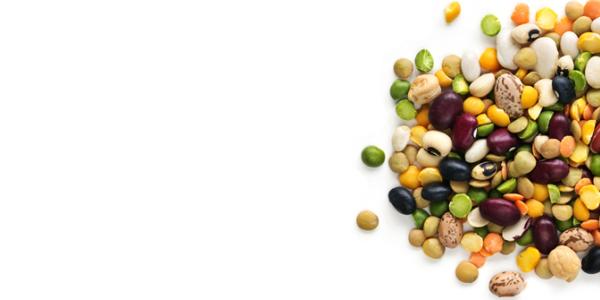The term “bean counter” initially was used for financial controllers and accountants who showed an abnormal amount of interest in even the smallest details of a company’s finances. So, if we are going to count food beans, let’s count the ways beans are Cancer Healthy.
Bean plants are different from other plants as they have pods with seeds inside them. Aside from beans this includes peas, lentils and some people even include the peanut in this category. Beans are unique as they take large amounts of nitrogen from the air and convert it to protein in the seeds.
Skip
Count the many varieties of beans
| Adzuki Beans | Garbanzo Beans or Chickpeas | Kidney Beans | Pink Beans |
| Anasazi Beans | Large Lima and Baby Lima Beans | Green and Red Lentils | Pinto Beans |
| Black Turtle Beans | Great Northern Beans | Mung Beans | Small Red Beans |
| Black-Eyed Peas | Green or Yellow Peas, Split or Whole | Navy Beans | Soybeans |
Beans can be purchased dry or pre-cooked (either canned or frozen). Beans are also made into protein powders or ground into flours.
Count the nutrients in beans
Protein, fiber, iron, potassium, folate, selenium, calcium and the cancer fighting phytonutrients, lignans and saponins, as well as resistant starch, which is not digested in the small intestine and is used as food for healthy bacteria to protect your colon. A one-half cup serving of beans provides 20% of the Daily Value of fiber and 10% Daily Value of protein.
Count the health benefits of beans
Beans are a staple in the Mediterranean diet which is known for reducing the risk of heart disease, the incidence of cancer, Parkinson’s and Alzheimer’s disease. Women who eat a Mediterranean diet supplemented with extra virgin olive oil and mixed nuts may have a reduced risk of breast cancer. Daily intake of even 10 grams of dietary fiber, the amount in a cup of beans, reduces the risk of colorectal cancer by 10%.
Count the ways to use beans
Beans are welcome additions to, or the base for multiple dishes from appetizers to even desserts. Swap all or half the meat in nearly any recipe with lentils or beans. Add cooked white beans or pea protein to smoothies. Try bean flours to make gluten-free baked goods. Add beans to pasta, rice, grains, soups, stews, or salads. Puree beans with olive oil and spices for a healthy dip or spread. Mix beans with vegetables as a stuffing for squash, potatoes, wraps and tortillas. Transform leftover brown rice or quinoa into lunch by mixing with chopped raw vegetables and blending in a little salad dressing. Make a vegetable “burger” patty with grains and beans as you would a meatloaf. When baking, replace ½ the flour with chickpea flour or replace 1/2 or all the oil in cookies with red lentil puree.
Count the years beans have been a food staple
The first crops cultivated in the Bronze Age were grains and legumes. Beans have been discovered in the tombs of the Pharaohs and Aztecs. The ancient Egyptians considered beans to be an emblem of life and had temples dedicated to them. The Roman's four most distinguished families were named after beans; Fabius (fava bean), Lentulus (lentil), Piso (pea), and Cicero (chickpea). In the middle Ages beans were the primary food of the peasants of Europe. Early discoverers learned that Indians scattered all over the Americas grew and ate numerous kinds of beans. And from the very beginning, beans were carried back and forth, traded and planted as explorers and nomads wandered the earth. In more recent times because of their great storage ability, beans were a primary food for sailors which is exactly how the Navy bean got its name. Beans have fed the armies of the world from ancient times to the wars of recent history. From the Great Depression right up to the present, beans have been recognized for their high nutritional content. At a small fraction of the cost of meat protein, one cup of cooked beans provides 25% of the daily requirement for protein.
Count your weekly bean meals
Continue the bean tradition. Cancer healthy recommendations are to include beans and legumes twice weekly into your diet.
Charis W. Spielman, MPH, RD, CSO, CNSC
Certified Specialist Oncology Nutrition
References: All about Beans and Legumes
Plusepledge.com
This article first appeared in the April 2017 edition of the HealthPerks newsletter.

